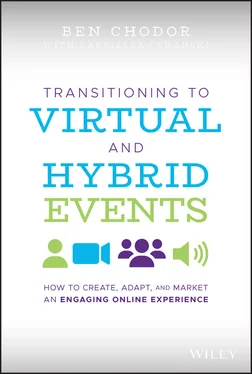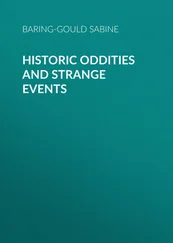Attendees can also take advantage of live chat, video chats, and Q&A. I've seen chat threads get really lively with people making connections, answering questions for one another, and offering their expertise on the topic. And lastly, you're able to pose questions directly to the speaker and get those answered in real time.
Myth #4: People won't stay as long for a virtual session as they would for an in‐person session
Reality:It's just as easy to walk out of a physical session or not even show up to the meeting as it is to click out of a virtual event. I would argue that there are more distractions at a physical meeting where most are located in cities with great climates and an abundance of leisure activities. When you click out of a virtual event, you're just right back where you started from, at your desk.
Plus, in a virtual environment we can measure how long people stay within a session with more accuracy than a badge swipe so we can confidently tell you which sessions are the most popular.
Myth #5: I'll only get limited reporting
Reality:This one is always a bit of a shock to me because within a virtual environment, like everything we do online, there is always activity data being collected. Any virtual event platform that you choose should be able to provide you with enough data for marketing to develop a lead scoring model, for sponsors to know who visited their booths and what assets were downloaded, and for your executive leadership to be confident that the exact audience they targeted actually attended.
So now that you know what a virtual event is, it's time to introduce you to some of the innovative tools you can use in order to create a compelling virtual event.
CHAPTER 2 Understanding Virtual Communication Tools
So, before we really dive into the playbook, I'll walk you through the difference between webinars, webcasts, streaming, virtual events, and web conferences and the best use cases for each. Each of these options can be part of your virtual event, but in order to have success with each option it needs to resonate with your audience and meet your business objectives.
Think about what you want to achieve with each program and your call to action for the participants desired. Is your goal to have them buy something, learn something, or engage with the program? Keep in mind the viewing habits of your audience: will they be watching from their computers, TVs, tablets, mobile devices, or potentially all of the above?
Also keep in mind you don't have to pick one; I am a big fan of using a blended mix of all the virtual tools at your disposal, because they all bring something unique in the way you get to deliver your message.
A webinar is traditionally an audio‐over‐slide broadcast that includes Q&A and chat functionality. The presenter is not visible on‐screen and the focus is on the slides using a microphone embedded directly in his or her computer or via a telephone connection. The virtual audience can type in questions and can also engage in open chat with a few viewers. Webinars are most commonly used for product launch or IT presentations where the focus is more on product specs or engineering details. These events are usually smaller in nature and may not always be available for on‐demand. They can also be ideal for presenters who have low internet bandwidth that can't support video or do not want to be on‐camera. Also, traditionally you would think of a webinar more as a seminar tool and one‐way technology and not used for collaboration.
As well, one of the most attractive elements of a webinar is that that the software available to create webinars is fairly easy to use, the software is readily available, and they are a low‐cost way of creating content and delivering it to your targeted audience.
Product Training ‐ you launch a webinar series that will educate your channel partners about the technical details and functionality of a new product. You want to be able to have live Q&A available as well as open chat. You may not want the webinar to be available on‐demand because of confidentiality issues.
Internal Communications ‐ Your company introduces a brand‐new expense tracking software that needs to roll out to regional employees over the course of a few weeks to educate and train as many employees as possible on detailed process flow. You need to focus on slides so employees can see how to go from one step to another. Because this is a training, you want to include audio over slides, Q&A, and a quiz at the end. In this use case it is important to have the program available on‐demand so that your audience can take the learning course whenever they are available and not at a set time or day of the week.
A live webcast is an online broadcast that takes place at a specific date and time. Just like live television, a live webcast happens in real time, with no ability to edit or correct footage. The spontaneity of a live webcast is one reason users enjoy attending them. It is also my belief that one of the keys to a successful virtual event is not only the webcast's functionality but also the quality of your webcasts.
A live webcast may include one or more of these elements: slides, live video, Q&A, polls, surveys, online chat, and social media integration. Organizers of live webcasts choose which of these elements to include.
Live webcasts are streamed over the internet via webcam, professional and prosumer video equipment, broadcast studios, satellite feeds, or videoconference units from physical event locations, to your home, office, or any location that you can get an internet connection. End users can experience live webcasts from any internet connected device and in browsers or mobile apps. Today, 96% of consumers rely on a smartphone to get things done. That means you need to ensure your content is viewable on a small screen!
The newest webcasting technology provides a WebRTC presenter panel. WebRTC is an open source web and mobile technology that allows for real‐time communications. What does that mean to your Webcast? It enables you to create a broadcast experience and bring other remote presenters into your webcast so that you can have real conversation live. This enables you to have a panel event or a one‐on‐one interview with each presenter in a different location. I have been streaming since the late 1990s and I think this is the biggest change and enhancement in the world of webcasting. It takes your webcast and turns it into a broadcast experience. My advice is when selecting a webcasting solution, make sure they have WebRTC presenter side capabilities. Speakers have access to a browser‐based “presentation console” of live webcast platforms. This console provides controls that are available exclusively to presenters: starting and stopping the broadcast, advancing slides, viewing audience metrics, launching polls, viewing poll results, viewing questions, moderating questions, and more.
End users access the “audience console,” which the live webcast platform makes available via browser or mobile app. The audience console enables users to view slides, hear audio, view video, participate in polls, submit questions, and access handouts.
An on‐demand archive of the live webcast is available as soon as the live webcast is over. Users who missed the live broadcast can return later to watch the webcast on demand. The most common uses of webcasts are for employee town halls, marketing events, educational programs, and to broadcast from a hybrid event. One of my favorite parts of a webcast is that you can handle audiences of any size while also delivering a higher‐quality program.
Читать дальше












